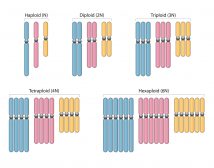Definition
noun
(taxonomy) A class of the phylum Platyhelminthes that is comprised of tapeworms
Supplement
The phylum Platyhelminthes (flatworms) is comprised of parasitic worms characterized mainly by their flattened, bilaterally symmetrical body. This phylum includes the four classes: (1) Turbellaria, (2) Trematoda, (3) Monogenea, and (4) Cestoda.
Species of the class Cestoda are also commonly called as tapeworms or cestodes. All known species of this class are parasites. Their life cycle typically involves parasitizing a definitive host (often, the gut) during adulthood and infecting an intermediate host (e.g. muscle tissues) during the juvenile phase.
The head of the tapeworm is referred to as scolex. The scolex has sucking grooves called bothria. The worm uses the bothria as suction cups to attach to the gut of the host. The body of the tapeworm is a strobila that is comprised of proglottids. The strobila is thin and resembling a strip of tape, thus, the name (tapeworm). The proglottids located distally contain the eggs, which are the infective phase of the worm.
Examples of tapeworm species are Taenia solium (pork tapeworm), Taenia saginata (beef tapeworm), Diphyllobothrium spp. (fish tapeworm), etc.
Scientific classification:
- Kingdom: Animalia
- Phylum: Platyhelminthes
- Class: Cestoda
See also:






